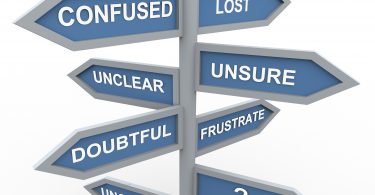Every day, we seem to hear about aggressive behavior, fights, and even attacks on sports fields and in dugouts. Recently, we busted some myths about aggressive behavior in sports. The most important point from that post is that aggressive behavior doesn’t just happen randomly. As a high school coach, you can play a powerful role in guiding your players’ behavior. Understanding the circumstances that may drive aggression can help you prepare for and even prevent violence that might affect your team. This week, we’ll share some factors that increase the potential for aggressive behavior and offer specific tips to help you prevent and limit aggression before, during, and after games.
Factors Associated with Increased Risk for Aggressive Behavior
While you should always be on your guard, here are some factors that sports psychologists have found can increase the likelihood of aggressive behavior. Under these circumstances, make sure that you, your coaches, and team leaders are watching for anything that can get out of hand.
- Hot weather – Nope, that’s not a joke. Aggressive behavior is more likely to explode on hot days.
- An earlier incident where it appeared that someone meant to hurt another player – Because most high school players watch games on TV (even before they get to high school), they will hear lots of talk about “retaliation” during pro and even amateur games. Players may learn to believe that aggression is “part of the game.”
- With big differences in the score of the game, aggression is more likely to happen on the losing side. No explanation necessary.
- Extended and extra-inning games – The longer games go, the higher the emotions and “value” in the win. Remember, you want focused, intense, assertive behavior, not gut-driven aggression as games go on and fatigue sets in.
- Local “rivalry” games. This is another obvious situation when aggression can take over. Keep in mind that improper fan behavior may negatively influence your players’ actions.
- Players known to have consistent aggressive behavior – When players get away with aggressive behavior, they are more likely to continue or even escalate tense situations.
- Coaches or assistant coaches known to promote and condone aggressive behavior – Keep your eyes and ears open for signs of problems in (or out of ) the opposing dugout. While you can’t control the opposition’s coaching style, you don’t want to get caught off guard by teams managed to be aggressive. And of course, you don’t want to be that guy!
Reducing Aggression and Violence in Sports
So, what do the sports psychologists say about preventing or reducing aggressive behavior in sports? Here are some important tips.
- Set an example. This cannot be overemphasized. Your players should look to you as the ultimate team leader and as person who sets the tone for behavior on the field. If you don’t know how to manage your own behavior in tense situations, it’s time to learn. Start by reading about the importance of a consistent temperament and how to manage big games. If you make mistakes, show your players you are willing to admit it.
- Watch and learn from others. You can learn a lot from what you see in both positive and negative situations. Don’t repeat your own or others’ mistakes.
- Act fast and unequivocally when aggressive behavior occurs. Don’t let players “guess” your standpoint after incidents on or off the field. Say something and make sure they know you mean it. Reinforce the difference between assertive and aggressive behavior whenever possible.
- Don’t let aggressive behavior go unreported on other teams. While it is often a good idea not to get involved in other teams’ issues, every time you ignore aggressive behavior you are increasing the likelihood of getting more of the same…or worse.
- Don’t allow overtly inflammatory activities or signs in the stands. There’s a difference between “cheering” and “supporting” the team versus the kind of extreme behaviors that can end up in fights both on and off the field. Fan behavior can be a bigger problem when local rivals are playing meaningful games. Make sure your school and district have clear rules for fan behavior and sufficient enforcement for those rules when local fans come for the “big game.”
- Reward restraint. Make sure you praise the good things your players do to prevent or limit escalation of conflict. Encourage your team leaders to do the same.
- Encourage social contact with opposing teams. When players get to know each other in low-key social situations, they are less likely to overreact to game situations.
- Help your staff and team leaders recognize warning signs and when intervention is needed.
- Get to know your players’ “triggers,” the words or actions that are most likely to make them lose control. Here are some examples: angry or disgusted facial expressions, raised voices, sharp forward movements, and mockery. Teach your players to be aware of these “triggers” and to work on reducing their response to them. Don’t support or condone their use against opposing teams.
- Watch for a “wave” of emotion. Because triggers can result in more triggers, aggressive and violent behavior can move through a group like a wave. Umpires stand in front of angry players with passive faces in order to break that wave. You can do the same thing. You or your players can “stop” the wave by not participating.
- Listen for players’ who “blame” everyone else for their own mistakes and problems. Players who “externalize” failures are more likely to use aggressive behavior. As a coach, you have a chance to help players learn to take responsibility for their own actions. Make this a priority.
- Watch for “recruitment” of allies before and during conflict situations. There is nothing more brainless than a group of people who have lost their individuality. “Mobs” start with one person who recruits emotional allies too quickly for those allies to think about what they are doing. It’s important to break up small groups that form in tense situations as quickly as possible by calling the individuals by name, reminding them about your expectations, and by moving them physically apart.







